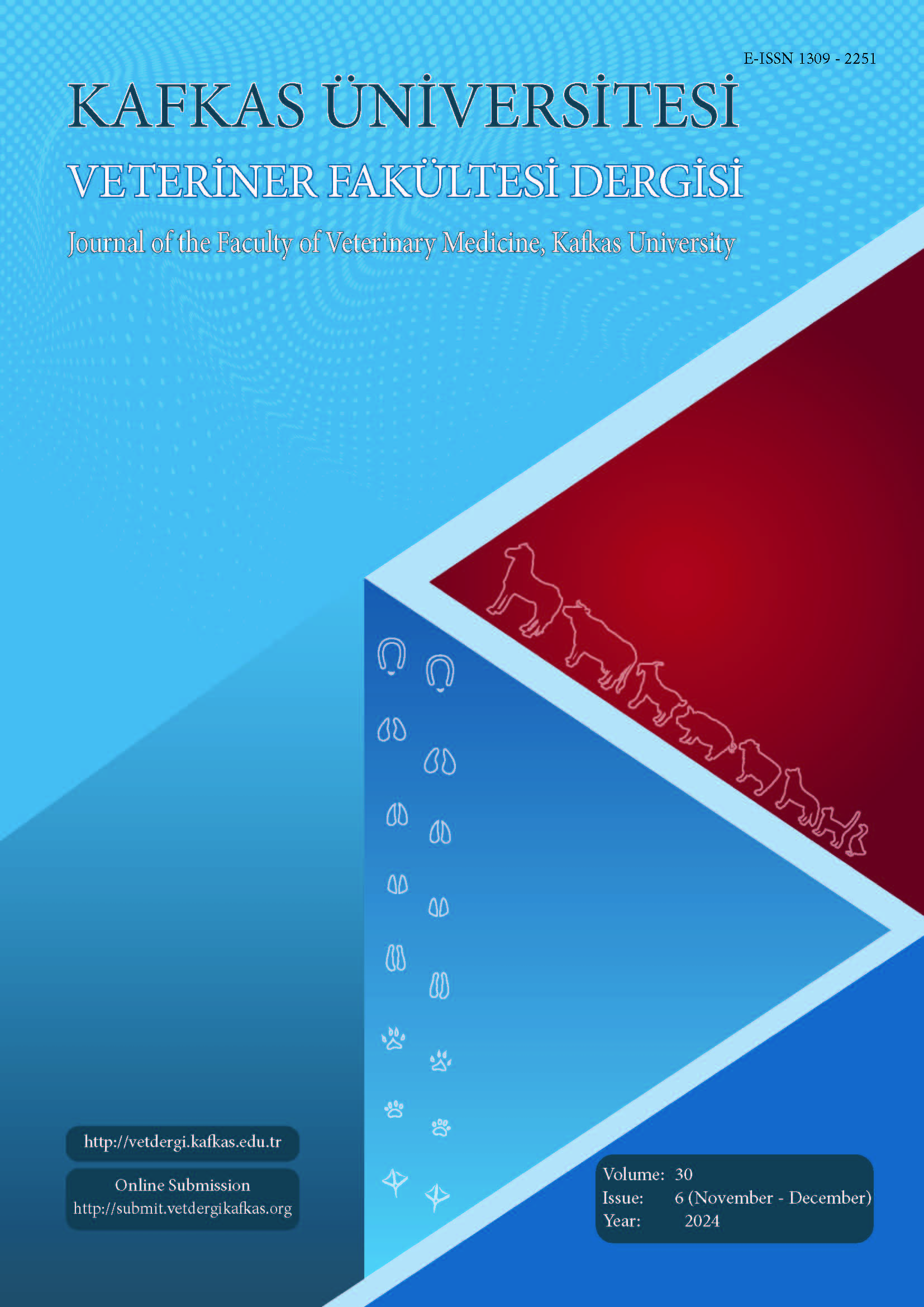
This journal is licensed under a Creative Commons Attribution-NonCommercial 4.0 International License
Kafkas Üniversitesi Veteriner Fakültesi Dergisi
2024 , Vol 30 , Issue 6
Association of Two ISSR Markers with the Growth Traits of Saburai Does (Capra hircus)
1Research Center for Animal Husbandry, National Research and Innovation Agency, Bogor, West Java 16911, INDONESIA2Research Center for Applied Zoology, National Research and Innovation Agency, Bogor, West Java, 16911, INDONESIA
3Faculty of Veterinary Science, Uludağ University, Bursa 8095, TURKIYE
4Department of Animal Husbandry, Faculty of Agriculture, Djuanda University, Bogor 16720, INDONESIA
5Department of Animal Science, Faculty of Agriculture, University of Lampung, Bandar Lampung 35145, INDONESIA
6Faculty of Animal Science, Hasanuddin University, Makassar 90245, INDONESIA DOI : 10.9775/kvfd.2024.32730 Saburai goat (Capra hircus) developed by the farmers at Tanggamus Regency, Indonesia and originated from the crossbreeding between Boer buck and Ettawa grade doe for meat production purpose. This study aimed to evaluate Saburai goat based on two ISSR markers of (AG)9C and (GA)9C. This study uses 28 adult Saburai does. Results showed that a total of 13 DNA fragments were observed according to two ISSR markers with a total of 11 polymorphic loci. However, the PIC value in (AG)9C ISSR marker was higher than (GA)9C ISSR marker. According to both ISSR markers, Saburai goat can be characterized into two clusters. In conclusion, the genetic diversity in Saburai goats is high and potential to improve with molecular selection. Keywords : Genetic diversity, Indonesia, ISSR marker, Polymorphic, Saburai goat










